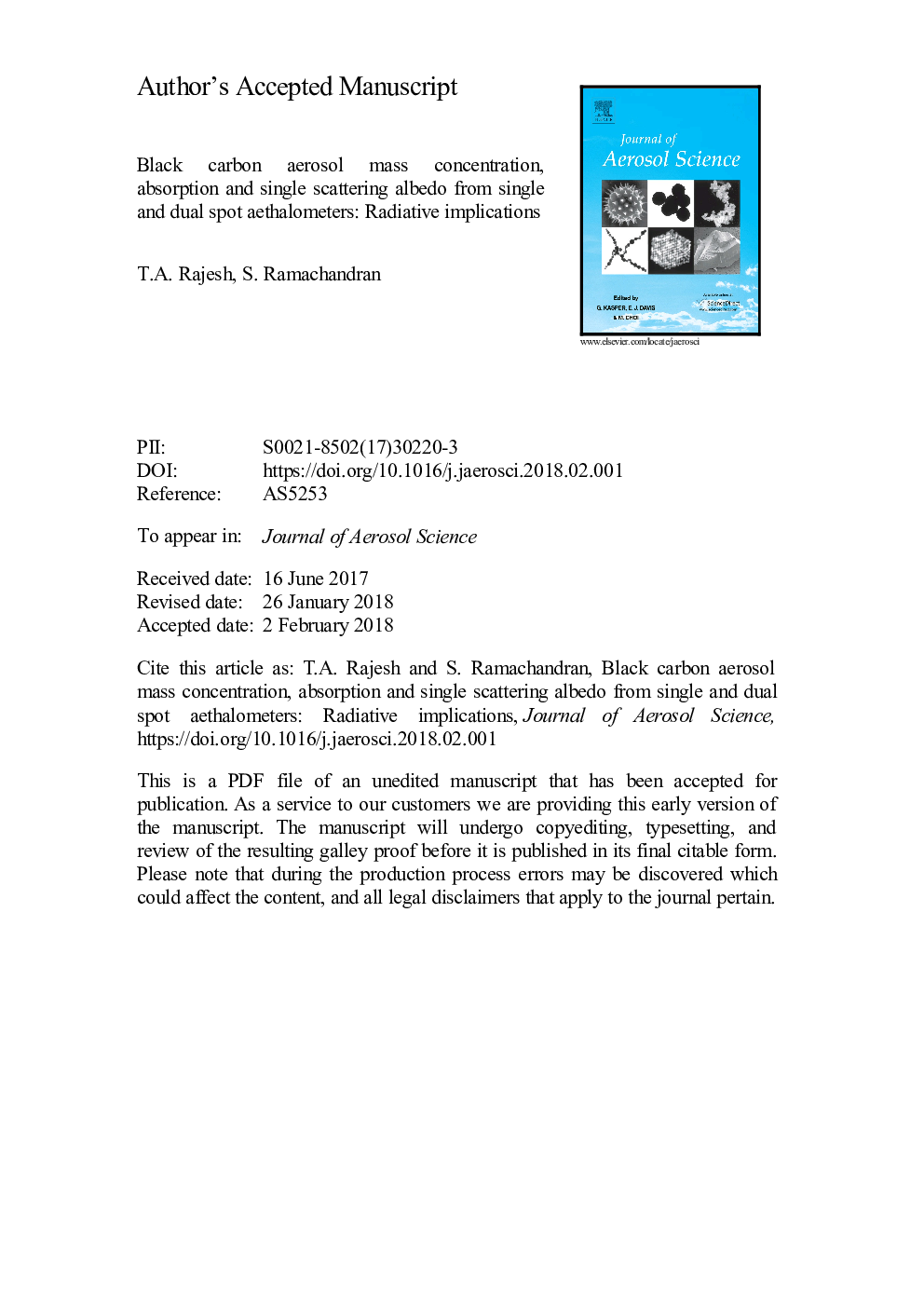| Article ID | Journal | Published Year | Pages | File Type |
|---|---|---|---|---|
| 8865271 | Journal of Aerosol Science | 2018 | 44 Pages |
Abstract
Black carbon (BC) is a primary aerosol emitted directly into the atmosphere from incomplete combustion. It absorbs incoming solar radiation and outgoing terrestrial radiation, which has significant implications to aerosol radiative forcing. Aethalometer employs optical attenuation technique to measure real-time BC mass concentrations. BC mass concentration measured using a single spot aethalometer (AE31) can be significantly uncertain due to filter loading effect. A modified version of AE31, namely, a dual spot aethalometer (AE33), uses a real-time loading effect compensation algorithm and measures BC mass concentrations. BC mass concentrations measured using single and dual spot aethalometers over an urban location are analysed. BC mass concentration from AE33 is higher (11%) than BC measured by post processed loading effect compensated AE31 data. Daily averaged BC mass concentration measured by AE31 and AE33 shows a very good linear agreement (coefficient of determination (0.98), and a small zero offset (0.22)). Aerosol absorption coefficients show an average difference of 28.5% between the two aethalometers. Aerosol absorption coefficient is utilised with nephelometer measured aerosol scattering coefficients to compute single scattering albedo (SSA). SSA (550â¯nm) estimated from the AE33 is always higher (â¼ 8%) than AE31. Estimates of aerosol radiative forcing show that when SSA changes from 0.65 to 0.70 over urban regions the atmospheric warming changes by 10%, while when SSA changes from 0.85 to 0.90 the atmospheric warming changes by 25%. This study highlights the non-linear relation between SSA and aerosol forcing, and reveals how crucial it is to determine single scattering albedo accurately in order to reduce the uncertainty in aerosol radiative forcing estimate.
Related Topics
Physical Sciences and Engineering
Earth and Planetary Sciences
Atmospheric Science
Authors
T.A. Rajesh, S. Ramachandran,
